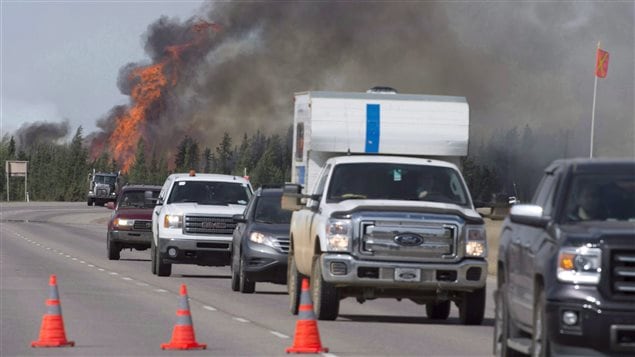The return of evacuees to the fire-ravaged oil town of Fort McMurray in the western Canadian province of Alberta is on schedule even though extensive environmental testing found elevated levels of pH and heavy metals in the city’s three hardest-hit neighbourhoods, provincial officials said today.
“Tomorrow morning we expect the first wave of Fort McMurray residents who have been displaced by wildfires to return to their community,” said Scott Long, executive director of operations for the Alberta Emergency Management Agency.
The Royal Canadian Mounted Police will have 300 officers on patrol in Alberta’s oilsands capital to ensure the safety of the returnees.
Long said the five conditions set out by the provincial authorities for the safe return of about 90,000 residents to Fort McMurray and other northern communities that were evacuated when the raging wildfire overrun the region on May 3 have now been largely met.
Five conditions met
The wildfire, which is still burning out of control in the bush east of the city, is no longer an imminent threat to the community. Critical infrastructure has been repaired to provide basic service. Essential services, such as fire, EMS, police and health care, have been restored to a basic level. Crews have secured hazardous areas and local government is up and running.
But much work remains to be completed, Alberta Premier Rachel Notley warned Tuesday.
“Despite the significant work that has been done, the city today is not the city that residents left behind a month ago,” Notley said.
A boil-water advisory remains in effect, some health-care services are not available, and many businesses will not be open, she said.
“Seniors, children under seven, and other at-risk groups should exercise caution when deciding when to return,” Notley said. “Anyone with a medical condition should not return until the hospital is fully operational.”
Toxic ash
The re-entry plan does not cover about 2,000 residents of Fort McMurray’s three hardest hit neighbourhoods: Abasand, Beacon Hill and Waterways where extensive environmental testing discovered elevated levels of caustic chemicals and heavy metals.
About 600 homes in these neighbourhoods cannot be permanently occupied until debris has been removed by the municipality, Alberta’s chief medical officer of health Dr. Karen Grimsrud said Monday.
“There are also heavy metals, like arsenic, in the samples, and poly-aromatic hydrocarbons, dioxins, furans being detected at concentrations above what is recommended for public health,” she said.
“These results and high concentrations are not unexpected given what we have seen, but it is critical that we take steps to protect residents from them.”
Cautious re-entry
Notley said residents choosing to return this week should carefully plan ahead.
“Bring food, water and any other supplies needed for the next two weeks,” Notley said.
“Take your time and travel safely. The highways will be busy, which is why it is so important to respect the phased re-entry plan. Please do not return until the designated date for your neighbourhood.”
Residents have also been advised to bring dust masks, flashlights, batteries, long-sleeve shirts, pants and boots so they’re ready to deal with whatever hazards may be found in their homes.







For reasons beyond our control, and for an undetermined period of time, our comment section is now closed. However, our social networks remain open to your contributions.